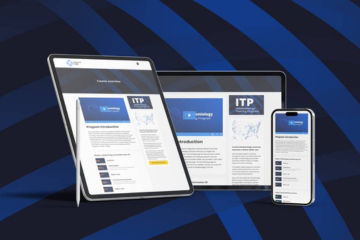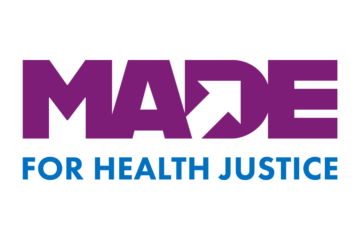
For more than a quarter century, the 10 Essential Public Health Services (EPHS) have given public health practitioners a common framework for assessment, policy development, and assurance. This framework has served public health, but the field must adapt to meet the changing needs of our communities.
That is why 25 years after the original framework was released in 1994, the de Beaumont Foundation and the Public Health National Center for Innovations (PHNCI) convened a task force of public health experts to review and revise the 10 EPHS. The updated version was released in September 2020, marking a milestone in public health history and practice.
The revised version of the Essential Services features several significant changes, most notably that the framework is now centered on equity. Putting equity at the core of the 10 EPHS reflects public healthʼs commitment to ensuring that all people can achieve optimal health, as well as recognition of the importance of the social determinants of health. Although the task force prioritized equity from its first convening, the death of George Floyd and the resulting summer of racial justice protests reassured us of the need to center equity in our fieldʼs practice.
As participants in the 10 EPHS revision process, we encourage local and state health departments to leverage the framework to strengthen partnerships, align priorities, and lead with equity in all they do. We offer the following recommendations for public health agency leaders to infuse guidance from the 10 EPHS into their strategies and operations:
Communicate the value of public health.
Public health professionals need to communicate the scope and importance of their work, which can be challenging. With the 10 EPHS, practitioners have a starting point for conversations about the functions and responsibilities of public health that can be easily understood by people without a background in the field. Our nationʼs unequal response to COVID-19 makes clear how important it is that elected officials and the public understand and trust public health. The simple, colorful graphic representing the 10 EPHS is especially helpful when explaining to community members the various ways that their health department serves them.
With the framework, public health professionals can also advocate for the resources needed to run health departments. The COVID-19 pandemic has demonstrated how necessary the services provided by state and local health departments are to community health and wellness. When communicating with policy makers, the framework is a powerful visual aid in making the case for funding that is sufficient for health departments to function.
Build an equitable culture.
The 10 EPHS framework encourages public health professionals to take an equitable approach to organizing resources and structuring their organizations. When evaluating people and initiatives, agency leaders should view these processes through a lens of equity. That requires self-reflection on the part of staff to question internal and systemic biases; all members of the organization should question whether their actions are promoting a more equitable culture or inadvertently causing harm. Systemic change in communities begins with the work carried out within our own agencies.
Strengthen professional development.
With the rapidly changing nature of their field, public health professionals never stop learning. The 10 EPHS can be incorporated into opportunities for workforce development, both formal and informal. Education around the framework can benefit staff at all levels, whether used as an introduction to basic health department responsibilities or as a refresher for seasoned professionals. By incorporating the 10 EPHS into professional development, staff members can learn more about how their roles intersect, as well as the unique value that their colleagues bring to their organizations.
The framework can also guide partnerships with universities and training programs. It is our hope that as more health departments promote the 10 EPHS, clinical and public health training programs will adopt the framework into their own curricula.
Standardize reporting.
When leading with the 10 EPHS in mind, public health professionals can better organize and report on their work, as well as explain their roles and those of partners. In addition, agency leaders can gain a better understanding of priorities within their organizations.
The 10 EPHS framework underscores the numerous responsibilities that health departments have to their communities, which go far beyond direct services. There is more to the work of public health agencies than is often publicized, making the 10 EPHS particularly useful for reporting on impact. Hospitals played a critical role in responding to the COVID-19 pandemic, for instance, but it is not their role to prevent community transmission and enact protective policies; that is the role of state and local public health departments.
Inform strategic planning and engagement.
With the 10 EPHS framework, health department leaders can ensure that their strategic plans align with the services that are truly essential to the communities they serve. The framework can also help divisions within a department plan for all the ways that specific division can serve the public.
In addition, the framework underscores the need to assess which people and groups are represented in decision making that affects entire communities. The 10 EPHS remind practitioners to work alongside the community members with lived experience, taking an equitable approach to the way programs are delivered and being transparent with all participants in decision-making processes.
No matter oneʼs role within a public health agency, the 10 EPHS are valuable to all who protect and promote the health of their communities. But the 10 EPHS are most useful when consistently employed, meaning that professionals must commit to integrating the framework into their agenciesʼ strategies, processes, and policies for the greatest impact on communities.
It is no secret that public health is underfunded and underresourced at a time when support is needed most. The 10 EPHS can help you recognize and communicate the impact of your work, which makes an invaluable difference in the health of communities every day.
For more information and to view the 10 Essential Public Health Services, visit ephs.phnci.org/toolkit.
This column first appeared in the January/February 2021 issue of the Journal of Public Health Management & Practice. See the final authenticated version.




